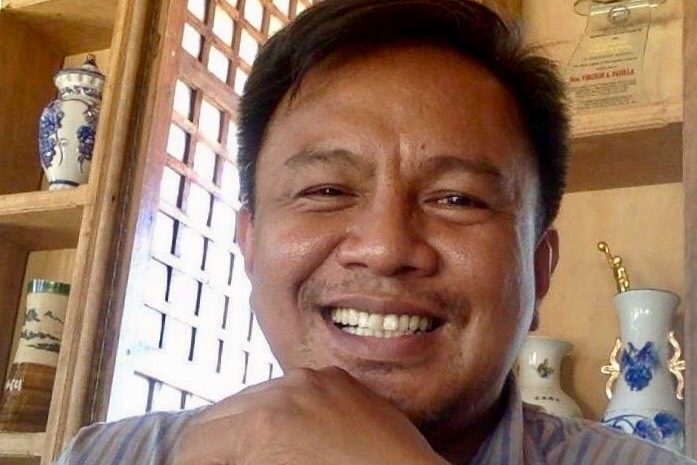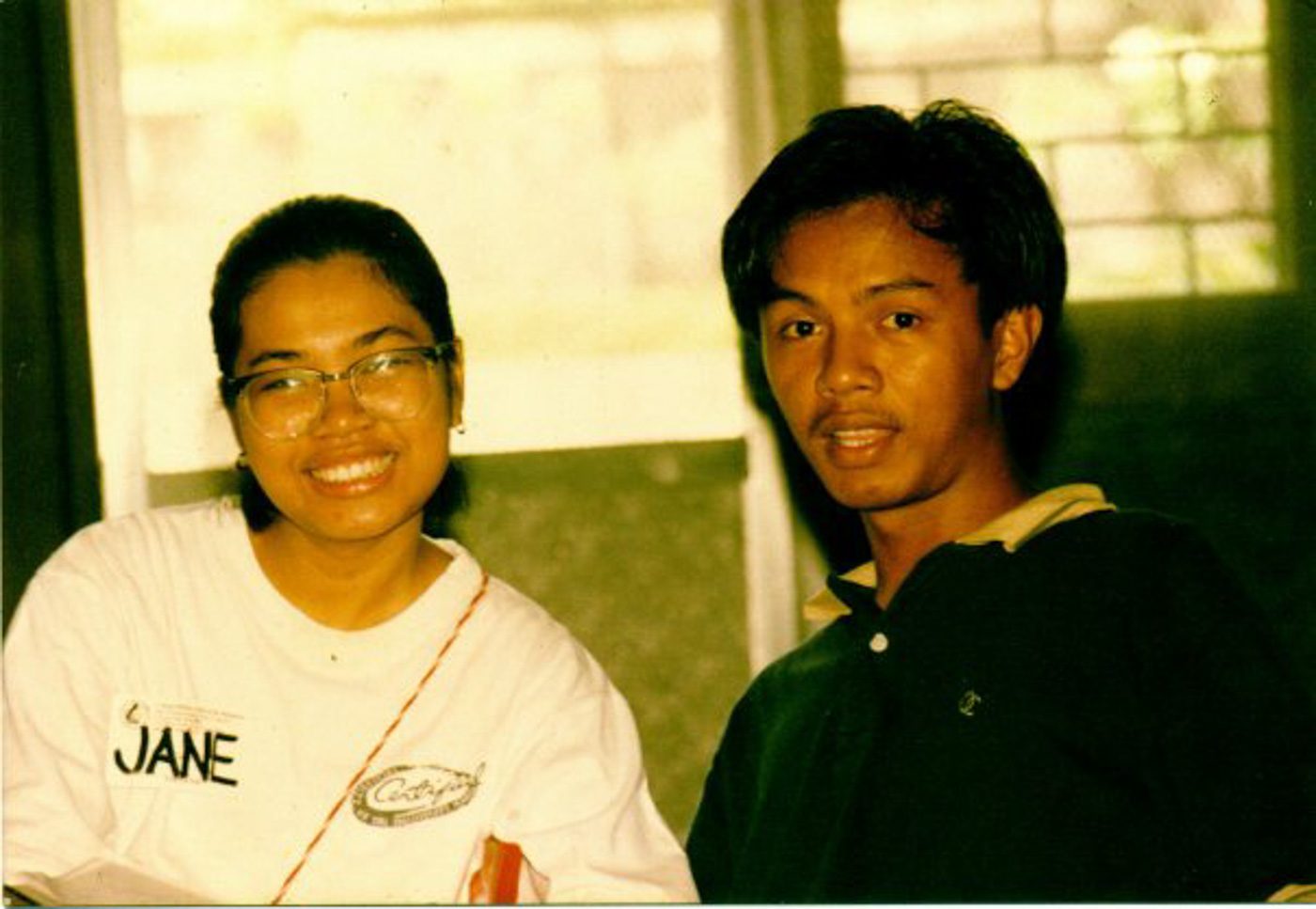SUMMARY
This is AI generated summarization, which may have errors. For context, always refer to the full article.

CAGAYAN, Philippines – “Pipiliin ko na lang hukayin ang sarili kong libingan. Wala kayong makukuha sa akin,” activist Randy Malayao told his tormentors sometime in 2008. (I’d rather dig my own grave. You will not get anything from me.)
The 49-year-old Randy was murdered on Wednesday, January 30, shot at close range while he was asleep inside a bus in Aritao, Nueva Vizcaya. He was reportedly on his way home to Isabela after attending a conference of the Makabayan group in Metro Manila.
Randy’s assailant fled on a motorcycle, witnesses said.
In 2008, Randy was detained on suspicion he was involved in the ambush of government forces in San Mariano, Isabela. He was also suspected of having a hand in the killing of former Cagayan Governor Rodolfo Aguinaldo.
Early start
Randy graduated valedictorian of Minanga Elementary School in San Pablo, Isabela, after which he completed his secondary education at Isabela State University Science High School.
He moved to the University of the Philippines in Diliman for undergraduate studies but later transferred to UP Visayas-Miag-ao to pursue a course in fisheries. He obtained his bachelor’s degree in 1992.
While in college, he joined and initiated the creation of local chapters of national progressive organizations in the university. He helped establish the League of Filipino Students (LFS) in UP-Miag-ao and became a member of the Beta Sigma Fraternity.
More privileged than others, Randy was the first among his peers to own a personal computer, but he willingly shared it with others, according to his close friend Raymund Villanueva.
He loved writing and reading books and became editor in chief of “Ang Mangingisda,” the official student publication of UP-Miag-ao. As a campus journalist, he served as vice president for the Visayas of the College Editors Guild of the Philippines (CEGP), the oldest and longest running organization of campus editors in the country.
As CEGP official, Randy helped resuscitate inactive campus publications in the Visayas, launching information drives about various social issues. So effective was he that Randy reportedly brought into the fold the most number of member-publications in the history of CEGP-Visayas.
After his stint as CEGP vice president, he returned to Manila to work full time for CEGP’s national office.

Causes
It didn’t take long before Randy decided to come home to the Cagayan Valley region to help local peasant groups push for the welfare of farmers, address concerns about militarization in remote rural areas, and advocate for the respect of human rights.
He was supported by his family in his choice to push for these difficult causes. For instance, his sister Perla defended him against those who tried to demoralize him when he was jailed for years.
“Talamak ang graft and corruption sa gobyerno kaya maraming katulad ng kapatid ko. Ipinaglalaban lang niya ang karapatan ng mga inaapi. Saludo ako sa kanya,” Perla said during a gathering in San Pablo church, following the disappearance of her brother.
(Rampant graft and corruption in government is what creates people like my brother. He was just fighting for the rights of the oppressed. I admire him.)
Randy’s friend Raymund recalled that Nena, the activist’s mother, would tell his friends to look after him. The request was no surprise. Randy, after all, was her youngest child.
Randy’s friends now surmise that the death of his mother Nena months before the brutal murder of her beloved son turned out to be fortuitous.
Threats and persecution
On the night of May 15, 2008, Randy disappeared. Before his supposed “abduction,” he reportedly texted a relative, “Someone is following [me].”
Nearly 5 days after his disappearance, Randy resurfaced inside the 5th Infantry Division camp in Gamu, Isabela. The military claimed he was arrested after he alighted from a bus in Cainta, Rizal.
Before that, different groups, including others in the international community, protested and pointed to the military as being responsible for Randy’s disappearance.
Later, Randy disclosed in an affidavit how he was allegedly tortured during interrogations by his military abductors.
“My captors covered my head with a plastic bag which caused me to suffocate. I was made to lie down on bare cement purportedly to simulate how it feels dying that way. On several occasions, they forced me to raise my two feet while sitting on a chair until my feet got stiff and my muscles tired and ached,” Randy said.
“On those occasions when I seemed to doze off, they would repeatedly slap or box my shoulders and upper torso or continuously beat my legs with a flat wooden stick which caused pain on those parts of my body. But so as not to leave any mark of injury, the interrogator’s companions would massage the parts of my body that were either slapped, boxed or beaten,” he added.
All these did not break him.
“Relentlessly, talagang na-interrogate ako nang apat na araw, apat na gabi. Deprived ako ng tulog. At siyempre, may mahalagang impormasyong gusto nilang alamin. Sabi ko, pipiliin ko na lang hukayin ang sarili kong libingan…Kilala ‘nyo na ako. ‘Yung mga nalalaman ko, dadalhin ko na lang sa hukay,” he said.
(They relentlessly interrogated me for 4 days, 4 nights. I was deprived of sleep. And of course, they wanted to extract important information from me. I told them I would rather dig my own grave… You already know me. What I know, I will take to my grave.)
He was implicated in the ambush of government troops in San Mariano, Isabela and the killing of former Cagayan governor and congressman Rodolfo Aguinaldo. Apart from that, he was also being investigated for the killing of a businessman in Ilagan, and a barangay captain in San Mariano town.
Days after, the National Democratic Front (NDF) claimed him as their consultant for the peace process and said he should be free from arrest and torture.
Leader in jail
Randy was initially detained in the Tuguegarao City Jail to face trial for the killing of Aguinaldo.
He was later transferred to Ilagan District Jail – after being acquitted in the Aguinaldo killing due to lack of evidence – to face other murder charges. He was later granted bail due to insufficient evidence.
He continued being an organizer, leader, and activist while imprisoned.
In fact, he was elected prison governor in both the Tuguegarao and Ilagan jails.
As “governor,” he quickly called for a meeting with the cell mayors to assess problems of inmates, and developed new schemes and means to address their problems.
He organized yearly basketball and friendship tournaments in the detention center. They started to grow vegetable gardens, attracting support from the Department of Agriculture. He was also instrumental in making jail cells cooler after trees and ornaments were planted around the jail perimeter.
There were kite-flying competitions. They staged “BJMP’s Got Talent,” which “produced quite a number of sketch artists, dancers, singers, acrobats, magicians, among other talents.”
He also urged the Public Attorney’s Office to be more “conscientious” in providing inmates legal counseling. Food, medicine, and hygienic supplies were less scarce after a partnership was struck with local religious and civic groups.
Randy built a small library and made more newspapers available. Cases of human rights violations, corporal punishment, harassment, and bullying of inmates had been reduced to near-zero.
“I have always been moderate and diplomatic in my dealings with jail administrators and reaped positive results from it. I am very candid and vocal about jail issues and inmates’ concerns without being confrontational,” Randy said.
“After 3 years, I have not been rendered lethargic and useless…Even under detention, I bloomed,” he added.
‘For just, lasting peace’
Before he was killed, Randy had actively participated in the formal peace negotiations between the NDF and the Philippine government under the Duterte administration. He had also been going around the country to advocate for the peace process.
His advocacy for “just and lasting peace” is highlighted in his Twitter account, which brandishes “warrior for just and lasting peace.”
Two years ago, Randy participated in the peace talks in Europe, and had been a spokesperson during the formal negotiations.
“He was an indefatigable worker in the service of the people and was ever ready to present the side of the NDFP in fora, seminars and consultations on the peace talks in the Philippines and overseas,” the NDF said in a statement.
With the flip-flopping of the Duterte administration in peace negotiations with communist rebels, Randy was listed by the Department of Justice as a “terrorist” – an accusation he vehemently denied.
In an interview with Northern Dispatch, a regional weekly newspaper based in Baguio, he was asked how he would feel if he could not live to see and witness “lasting peace.”
He replied, “Alam mo, hindi na mahalaga ‘yon. Basta ‘yun ‘yong kailangan kasi ng bayan natin. ‘Yung panahon ko, lilipas yan. ‘Yung ‘just and lasting peace,’ hindi. Lasting peace nga eh ‘di ba?“
(You know, that’s no longer important. It’s what our nation really needs. My time will pass, but “just and lasting peace” won’t. That’s why it’s called lasting peace, right?) – Rappler.com
Add a comment
How does this make you feel?
There are no comments yet. Add your comment to start the conversation.